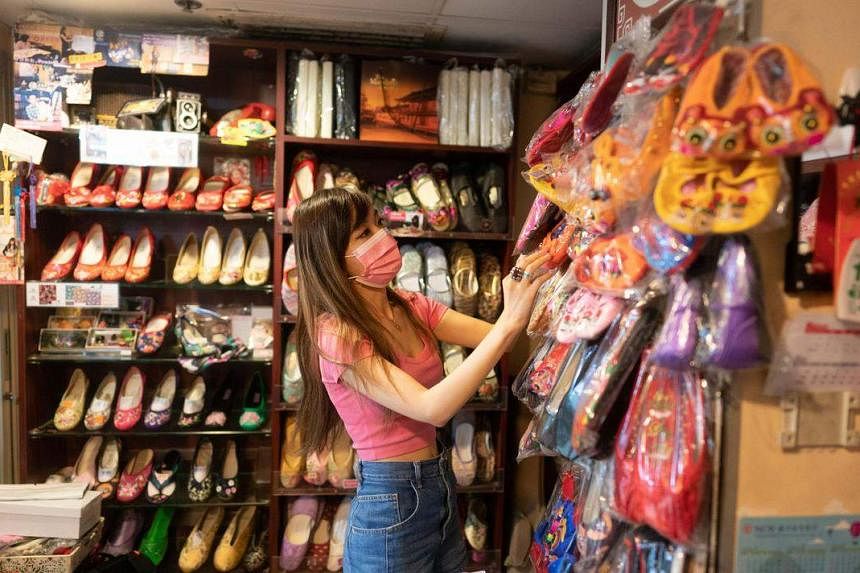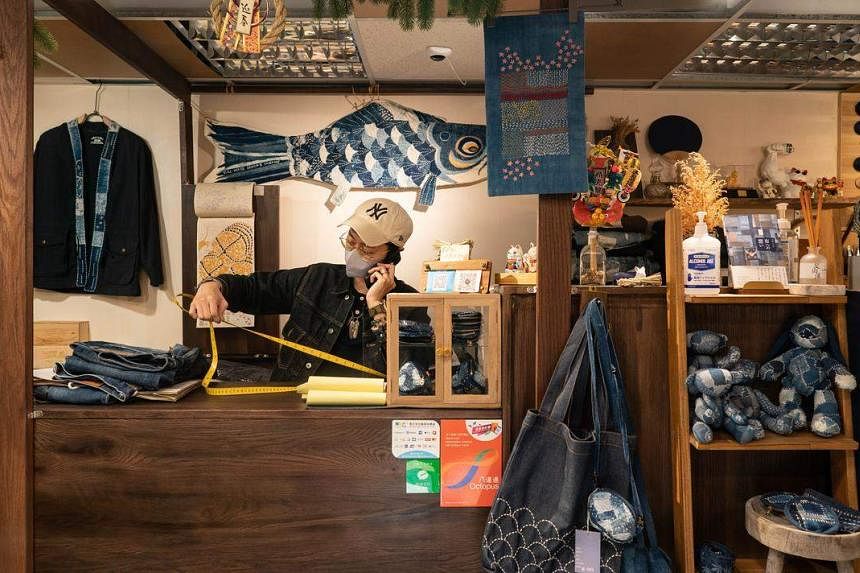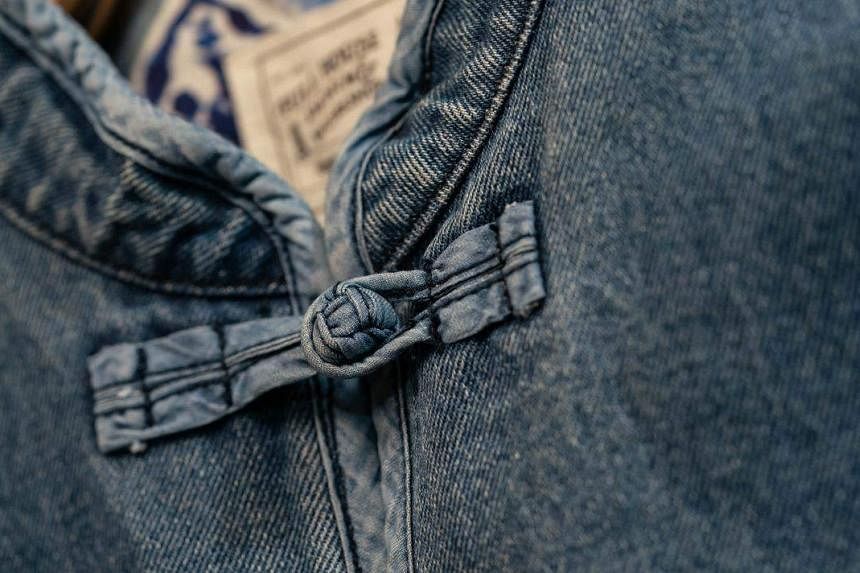HONG KONG – In a brightly lit cubicle tucked under the staircase of a tenement building in Hong Kong’s Jordan district, Mr Cheung Shun King guided a chisel over a pearly white mahjong tile to form grooves of concentric circles.
“I have been doing this my whole life,” he said, standing to brush off the shavings with a voluminous feather duster. “That’s why I have to continue.”
Against a backdrop of breakneck transformation, handmade items in Hong Kong have taken on a special meaning among a younger generation, and those enamoured of the grit and glamour of the city’s late 20th century.
Over the past two decades, family businesses and decades-old diners have been toppled by inhospitable rents and redevelopment projects. Political upheaval since 2019, coupled by restrictive pandemic rules, have triggered a wave of migration away from the city and kept tourists at bay. As one cultural icon after another faded, residents have sought to hold on to what remains.
Mr Cheung, 70, comes from a family of mahjong carvers and inherited Biu Kee Mahjong from his father in the 1960s. The future of his shop at 233 Temple Street, which he has run for nearly three decades, is in limbo, and he may soon be forced to move because of government building regulations. But he continues to open the shop every day of the week. “I will keep working as long as I have the strength to do so,” he said.
While the game of strategy has remained popular in the city, mahjong parlours have faded out of fashion, and cheaper mass-produced sets dominate the consumer market. Handmade mahjong sets like those made by Mr Cheung and his father and grandfather have become increasingly uncommon. For a full set of 144 tiles, which takes him weeks to complete, Mr Cheung charges upward of HK$5,500 (S$967).
Mr Cheung has in recent years begun selling tiles with personalised messages or etchings. Prices start from HK$100 per word and HK$300 per drawing, and orders have to be placed by phone or on his Facebook page, with weeks of lead time.
New look at traditional crafts
A three-minute walk away from Biu Kee, up a flight of stairs at the austere Bowring Commercial Centre, Ms Miru Wong sells embroidered footwear at Sindart, a matchbox-size shop lined with jewel-toned slippers.
The business was first established in 1958 by her grandparents. Back then, her grandfather made shoes that her grandmother would embellish with embroidered fish, dragons and peonies. Ms Wong, 32, was the only member of her family to learn both skills.
She took over Sindart about a decade ago after studying design and making the task of modernising embroidered shoes the subject of her final thesis project. Since then, she has introduced new designs, such as peacock feathers and bamboo-munching pandas. Working with her father, Mr Billy Wong, a graphic designer, she replaced the soles of the slippers with an anti-slip material.
Ms Wong continues to sell crimson bridal slippers with elaborately embroidered insoles and baby bootees shaped as tigers and elephants with embroidered eyes, ears and teeth.

After the onset of the coronavirus pandemic, Ms Wong noticed that the wholesalers from which she sourced textiles and sequins were closing one after another.
“You use many different materials when you make shoes,” she said. “So when those materials disappear, you have to find new ways.”
She crafted slippers from the remaining stock of patterned fabrics that were being phased out – silvery brocade and violet-hued paisleys – and marketed them on her Instagram account as a discontinued series.
“There are actually many people who really like embroidered shoes,” she said, adding that she had apprentices ranging in age from retirees to high school students. “And younger people have a lot of drive to think of new ways to make traditional crafts.”
Old and contemporary at the same time
To Mr Elton Chow, the 32-year-old director of Full House Denim & Workshop, contemporary cutting and trendy touches were essential in making otherwise retro garments appealing in everyday settings. His airy shop is on the 11th floor of the Multifield Centre in Shanghai Street in the Mongkok district, along a stretch of wholesale kitchenware shops.
A former denim merchandiser, Mr Chow’s decade-old business is known for selling custom jeans for all shapes and sizes, with prices starting from HK$2,100.

Mr Chow also designs ready-to-wear denim apparel – from suit trousers and newsboy caps to chambray kimonos and wide-legged hakama pants.
“I have quite a lot of admiration for Japanese artisans and their devotion to traditional methods. What they make is very refined,” he said. “Japanese denim is also renowned in the world, so that’s where we source a lot of our fabric.”
Retailing for HK$1,400, a cropped washed jacket in his latest collection features textured sleeves made from the material of kendo uniforms and traditional Chinese pankou knot buttons. The inner lining is made of slub yarn, with a digitally printed blue and white pattern.

The Japanese patchwork tradition of boro and sashiko – patchwork and stitching that is simultaneously decorative and functional – was the ethos behind denim teddy bears, tote bags, purses, socks and the inner layers of several jackets. Most recently, Mr Chow also made a stitched boho sweatshirt from several vintage paisley bandannas.
“If you wear a traditional garment, it might not look very good,” he said. “We use special fabric to create traditional styles, while incorporating cutting and features that adhere to contemporary aesthetics.” NYTIMES

